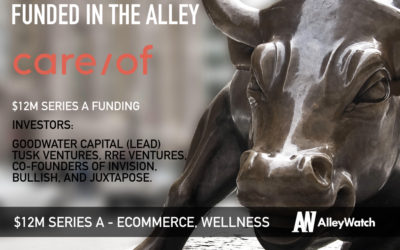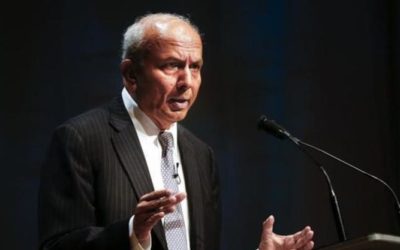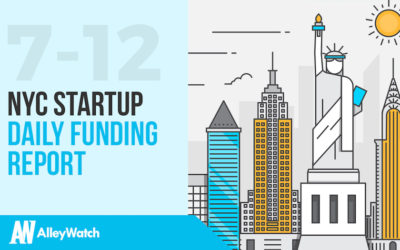Manulife Exploring IPO or Spinoff for John Hancock Unit–Update
Canadian insurer Manulife Financial Corp. is exploring a possible initial public offering or spinoff of its John Hancock Financial Services Inc. unit, according to people familiar with the plans.
Manulife has been under pressure from some of its shareholders to sell John Hancock after years of disappointing returns from the U.S. unit, according to two people familiar with the company.
Write to Leslie Scism at leslie.scism@wsj.com, Vipal Monga at vipal.monga@wsj.com and Jacquie McNish at Jacquie.McNish@wsj.com Canadian insurer Manulife Financial Corp. is exploring a possible initial public offering or spinoff of its John Hancock Financial Services Inc. unit, according to people familiar with the plans.
Manulife has been under pressure from some of its shareholders to sell John Hancock after years of disappointing returns from the U.S. unit, according to two people familiar with the company.
Given global interest rates have been near zero for almost an entire decade, insurers have earned far less in investment income on older versions of the policies than anticipated when sold, and some have taken repeated charges against earnings to reflect the policies’ poor financial results.
Meanwhile, Paris-based insurance conglomerate AXA is planning to take its U.S. life-insurance operations public with a book value of about $14 billion to $15 billion, according to people familiar with the matter.
As a result, a spinoff to existing shareholders of parts of a company’s U.S. life-insurance operations — not just the most-troubled product lines — can become the preferred route for a divestiture, industry investment bankers, analysts and consultants say.
The unit also accounted for almost 60% of Manulife’s C$1.004 trillion assets under management and administration at the end of the first quarter, according to filings.
John Hancock’s businesses include selling life insurance, mutual funds and other investment products to individuals and running 401(k) retirement-savings programs for employers.
Divesting John Hancock would allow Manulife to free up regulatory capital and could add $5 a share to Manulife’s stock price of roughly C$24 on the Toronto Stock Exchange, said Mr. Mihelic in a research report.
This NYC Startup Just Raised $12M to Personalize Your Vitamin Daily Intake
Enter Care/of, the personalized daily vitamin delivery service that sends a monthly supply to your door based on your own personal needs and physiology.
The startup, launched in November of 2016, promises to provide transparency, honesty and quality around the vitamins you put in your body daily when using the service.
Today we sit down with cofounded and CEO Craig Elbert to discuss the rapidly growing business, its future, and the company’s latest round of funding.
Who were your investors and how much did you raise?
Tell us about your product or service.
Care/of is the first personalized vitamin and supplement company offering bespoke recommendations, built on honest guidance and top-tier ingredients.
It is one of the fastest-growing companies in the direct-to-consumer health and wellness space, having doubled sales every two months since its launch in November 2016.
I knew there was an opportunity to create a better-designed customer experience that would make the process much easier for people simply looking to do something good for their health.
Our investors can see that our approach to innovation here–rooted in using data to enable personalization– is one that can truly help create a unique and valuable customer experience and help propel our business forward.
We also plan to develop new products, including programs tailored towards specific health goals, and launch a mobile app to further the consumer experience and meet the demands of the company’s rapidly growing customer base.
Alopex Gold Inc. Completes Initial Public Offering
Alopex Gold Inc. Completes Initial Public Offering.
The Shares will commence trading today on the TSX Venture Exchange under the symbol “AEX” The Offering was made through Paradigm Capital Inc., acting as lead agent, and Canaccord Genuity Corp. (collectively, the “Agents”).
The final prospectus dated June 29, 2017 (the “Final Prospectus”) provides that subsequent closings of the Offering, up to a maximum total issuance of 20,000,000 Shares, may occur at any time on or before September 28, 2017.
In addition, Alopex has granted the Agents an over-allotment option (the “Over-Allotment Option”), exercisable in whole or in part for a period of 30 days following the final closing of the Offering, to purchase up to an additional 15% of the aggregate number of Shares issued pursuant to the Offering at the Offering Price to cover over-allotments, if any, and for market stabilization purposes.
With our exciting summer 2017 work program about to kick off, I look forward to updating the market as to our progress in the coming months.”
2017 Summer Work Program It is anticipated that with the funds now in place and much of the pre-planning phase well underway, the Corporation will be embarking on the multi-stage 2017 summer work program across its licence area.
Further details in regards to timing and scope of work will be announced in due course once finalized.
About Alopex Alopex’s principal business objectives are the identification, acquisition, exploration and development of gold properties in Greenland.
The Corporation’s principal asset is a 100% interest in the Nalunaq gold project, an advanced exploration stage property with an exploitation licence including the previously operating Nalunaq gold mine, which hosts a high-grade National Instrument 43-101 – Standards of Disclosure for Mineral Projects (“NI 43-101”) compliant gold Inferred Mineral Resource estimate of 263 thousand ounces of gold (Koz) at a grade of 18.7 g/t and a number of nearmine and regional exploration targets.
The technical information presented in this press release has been approved by James Gilbertson C-Geol, who is a full time employee and Managing Director of SRK Exploration Services Limited and a Chartered Geologist with the Geological Society of London, and as such a Qualified Person as defined by NI 43-101.
Morning Agenda: Britain Bolsters Its Bid for Aramco I.P.O.
There’s one very big Middle Eastern oil concern that is preparing an initial public offering: Saudi Aramco, the behemoth that powers Saudi Arabia’s economy.
Exchanges worldwide have been competing hard for the listing, which would come next year.
London’s biggest rival, according to analysts, is probably the New York Stock Exchange.
A French court said on Wednesday that the technology company did not have to pay $1.3 billion in back taxes.
Last year, the European Union ordered Apple to pay $14.5 billion in taxes in Ireland.
The plaintiffs can now seek out roughly 18,000 other Uber drivers who opted out of arbitration in their contracts with the company and invite them to join the case.
In his first public speech in his new role, Mr. Clayton offered few specific policy recommendations.
• Just 19 of the 54 campaigns in the United States that involved a proxy contest went to a shareholder vote.
Activists scored some form of victory in about 47 percent of votes.
• Roughly 20 percent of the companies subject to campaigns had been attacked by another activist in the previous four years.
Prataap Snacks IPO likely to hit capital market by December
Prataap Snacks IPO likely to hit capital market by December.
Anubhav Sahu & Himadri Buch Moneycontrol News The initial public offer of Prataap Snacks Ltd, the maker of Yellow Diamond Chips, is likely to hit the capital market by December, said Amit Kumar, Chief Executive Officer and Managing Director, Prataap Snacks.
The company clarified that Sequoia Capital would continue to remain a major shareholder post the IPO.
Edelweiss, JM Financial and Spark Capital are managing the issue.
Proceeds from the public offering will mainly be used for funding capital expenditure requirements, repayment of borrowings, modernisation of existing manufacturing facilities, marketing and brand building activities.
Prataap Snacks had last year brought in a second private equity investor as a shareholder.
The PE firm paid around Rs 45 crore for the stake, valuing the company at Rs 1,536 crore.
It makes and sells potato-based snacks, extruded snacks and namkeen.
Five years ago, it acquired the snack foods business of its group company, Prakash Snacks and brought in the Yellow Diamond brand and the snack foods business under one umbrella.
The company’s entry into the public market would expand the basket of listed snacks makers with Prataap Snacks turning out to be among the biggest with a turnover of Rs 900 crore in last fiscal year.
Convenience Retail REIT considers options ahead of IPO close
Convenience Retail REIT considers options ahead of IPO close.
The deal is not underwritten.
It’s a tough time to bring a new raising to market.
Investors are cautious and only one company has raised more than $150 million for an initial public offering this year.
Investors are looking at Convenience Retail REIT based on its distribution yield.
The offer is priced at a 6.5 per cent distribution yield based on 2018 financial year forecasts and 6.85 per cent on 2019 numbers.
Viva Energy REIT is bigger with a 425 petrol station portfolio, while Convenience Retail REIT comes to market with an initial portfolio of 66 sites.
Unfortunately for Convenience Retail REIT, Viva Energy REIT shares are down 8.3 per cent to $2.20 in the past month.
[Convenience Retail REIT is at a 9.9 per cent premium to NTA].
While sources said there was no move to re-price the float, the brokers were seeing whether it was possible to bring forward the underwrite.
If You’re Going to Buy Influencers, Better Stick to Instagram (and Avoid Universities)
Google’s been looking to influence the world even more than it has.
According to a breaking investigation from Wall Street Journal story, the company has regularly pays professors at top universities — $5,000 to as much as $400,000 — to create research that bolster’s Google’s views to government regulators.
Or why they will hire social media influencers (even though they may have no influence) or run extensive PR campaigns.
Google and some of the researchers told the Journal that there are no strings tied to funding.
But not all the research the Journal looked at indicated that Google was associated with the study in any way, and there can be other interactions that raise questions: Some researchers share their papers before publication and let Google give suggestions, according to thousands of pages of emails obtained by the Journal in public-records requests of more than a dozen university professors.
It mentioned the work of the Campaign for Accountability, a non-profit that has documented Google’s support of hundreds of academic papers, but then noted that the organization received funding from Oracle, which is a rival of Google’s.
We’re happy to support academic researchers across computer science and policy topics, including copyright, free expression and surveillance, and to help amplify voices that support the principles of an open internet.
Maybe Google should notice that not all its grantees disclose the funding every time they mention their work.
Those in startups may be laughing at the notion that they could get caught in such issues.
Part of the pleasure of running a business is knowing that your product or service makes people happy and that your popularity is based on your own merit.
India: Catholic Syrian Bank said to reconsider IPO plan after Fairfax deal collapse
India: Catholic Syrian Bank said to reconsider IPO plan after Fairfax deal collapse.
Catholic Syrian Bank (CSB) is once again considering going public as talks for a private stake sale to Canadian billionaire Prem Watsa’s Fairfax Financial Holdings have fallen through, two people aware of the development said.
“An IPO (initial public offering) is back on the table for Catholic Syrian Bank.
They are in preliminary discussions, though no final decision has been taken as of yet.
The bank was looking at an initial public offering before it started talking to private investors such as Fairfax.
In June 2015, markets regulator Securities and Exchange Board of India had approved its public offering.
So far this year, 13 companies have raised over Rs11,700 crore through the IPO route.
In 2015 and 2016, 47 companies raised a total of Rs40,177 crore through IPOs, data from Prime Database shows.
The IPO market in the past two years has seen several banks go public.
The stock ended trading on Monday at Rs541.20 on BSE against its IPO pricing of Rs358.
The AlleyWatch NYC Startup Daily Funding Report: 7/12/17
The round was led by New Enterprise Associates (NEA) and included participation from Canvas Ventures, Lerer Hippeau Ventures and other strategic investors.
“There is a lot of misinformation in the freight industry which creates pressure, impossible – and sometimes dangerous – deadlines, misdeliveries, and ultimately the failure to satisfy customers.
Transfix has raised a total of $78.5M in funding since its founding in 2013.
The company was funded by Elton John and AXA Strategic Ventures.
Revere, the health startup delivering fitness nutrition derived only from natural, whole foods, has raised as $2M seed round.
The round was led by Lerer Hippeau Ventures with participation from SterlingVC and Brand Foundry Ventures.
“It’s been well documented for decades that nutrition is the most important part of an exercise routine and really health overall.
Our goal is to make it easier, simpler and more convenient for people to take advantage of this insight,” remarked Revere CEO and co-founder, Matthew Scott.
Care/of, the personalized vitamin and supplement company built on honest guidance and top-tier ingredients, has raised a $12M Series A round.
The company has now raised $15M since its founding in 2016.
Care/of raises $12 million in Series A for its home-delivered customized nutrition packs
Care/of raises $12 million in Series A for its home-delivered customized nutrition packs.
Care/of, a year-old, New York-based company that makes subscription-only vitamin supplements that it says are tailored specifically to users’ needs, has raised $12 million in Series A funding to get more of its pill packs on users’ welcome mats.
Goodwater Capital led the round, with participation from Tusk Ventures, RRE Ventures, the co-founders of the prototyping tools company InVision and earlier investor Juxtapose.
Collectively, its team is working on engineering, design, marketing, supply chain stuff and, of course, R&D.
Customers also can order at least 30 more standardized products, including vitamins, probiotics, specialty supplements and a recently launched prenatal vitamin.
Care/of says it has a pipeline of new products, including vitamins, supplements and other wellness products coming, too.
Most notably, Olly, which makes sugary, chewable vitamins, began as an online-only business but in recent years, it has shifted its focus almost entirely to selling through big-box retailers like Target, where it now derives most of its revenue.
Though Olly also began as a subscription business, Olly CEO Brad Harrington, had told us he didn’t recommend it, because it’s “hard to scale,” he’d said.
So you’ve got to be able to withstand [those costs] while you’re building a brand.” Asked if that was a concern, Care/of CEO Craig Elbert, a former VP of marketing at the online e-tailer Bonobos, suggested that it’s not.
Instead, he suggested, one-size-fits-all approaches to health are outdated and will invariably give way to more personalized approaches across every imaginable category.
Google acquires India’s Halli Labs, which was building AI tools to fix ‘old problems’
Google acquires India’s Halli Labs, which was building AI tools to fix ‘old problems’.
Today it was made public that Google has acquired Halli Labs, a very young (its first public appearance was on May 22 of this year) startup based out of Bengaluru, India, that was focused on building deep learning and machine learning systems to address what it describes as “old problems.” The company says it will be joining Google’s Next Billion Users team “to help get more technology and information into more people’s hands around the world.” Halli announced the news itself earlier today in a short post on Medium, and Caesar Sengupta, a product management VP at Google, also confirmed the acquisition with a Tweet.
The company’s founder, Pankaj Gupta, is a data scientist with an interesting history that includes running recommendation and personalization at Twitter, and a role as CTO at now-defunct Indian Airbnb rival Stayzilla, among other entrepreneurial ventures.
We’re trying to find that out too.
One is that it shows the ongoing interest by the largest tech companies in the world to double down on AI and its many facets, from software through to hardware, and pure research through to practical applications.
The other trend here is that we are continuing to see a significant amount of consolidation in the field of AI.
While some of these will grow longer term as independent entities — Element.ai, as one example, is banking on the idea of staying independent as a counter lever to the big tech giants — the very biggest tech players are also serving as magnets bringing some of the smaller players and their talent together.
Companies besides Google and its parent company Alphabet that are acquiring AI expertise through acquisitions include Baidu, Samsung, Microsoft, Apple, Facebook and Snap, among many others.
Updated with comment from Google.
Featured Image: Bryce Durbin
Razer is said to target an IPO at up to US$5b valuation
Razer is said to target an IPO at up to US$5b valuation.
The company – which makes accessories from mice to laptops that bear a green tri-headed snake – is developing a mobile device tailored for its consumer base of hardcore gamers, according to the people.
Razer’s share sale, which will give it ample ammunition to develop new gadgets, will seek to value the company at US$3 billion to US$5 billion, the people said, asking not to be identified talking about internal plans.
Razer, which sells products online and in chains like Best Buy across the US, has said it wants to use Hong Kong as a beachhead from which to accelerate its expansion into China’s US$25 billion gaming market.
The company now sells its product there via e-commerce giants JD.com Inc and Alibaba Group Holding Ltd, co-founder Tan Min Liang said in an interview in June.
Razer’s IPO would be one of the largest tech debuts in the Asian financial center in years.
The company, co-founded in 2005 by Singapore-born Tan, considered a US IPO as far back as 2014, people with knowledge of the matter said at the time.
In October the same year, the company was valued at US$1.5 billion, according to data from researcher CB Insights.
The company, whose backers include Intel Corp and a unit of Temasek Holdings, counts gaming hardware as its main source of revenue but is also developing a virtual currency called zGold and building up its community.
The global video games industry is expected to grow by about 25 per cent to US$146 billion in 2020 from an estimated US$117 billion this year, according to data from Euromonitor International.
Ready to gun the engine, bitcoin startups wait for govt to wave the flag
Governments and users around the world are still getting used to the idea.
Despite the regulatory uncertainty and nascency of the market, several bitcoin startups and exchanges in India have taken the leap of faith.
The winner of each block gets fifty coins for the first four years, twenty-five coins for the next four years, and half as much again every four years.
And these digital tokens are the revenue for the other part of the ecosystem, called miners.
Just like people keep gold in the locker for security, there are independent wallets where investors can store their bitcoins.
In the years before 2016, just 23 were founded.
In India, however, the market is a fraction of Japan and China.
“Bitcoin startups find it difficult to raise funds because VCs feel there is no regulatory clarity.
Of the total funds raised worldwide by bitcoin startups, India accounts for less than 1%,” says Goenka.
Globally, there are dedicated VC funds investing in blockchain startups,” says Darwin Labs’ Jain.
Elton John invests in Qloo, a startup that analyzes your taste
Elton John invests in Qloo, a startup that analyzes your taste.
Qloo, which bills itself as “the cultural artificial intelligence data platform,” has raised $6.5 million in additional funding from AXA Strategic Ventures and Elton John.
Yes, that’s the Elton John who co-wrote and performed “Tiny Dancer” and “Candle in the Wind.” He’s actually not the first big name to back the New York startup — actor Leonardo DiCaprio and Starwood Hotels founder Barry Sternlicht were both investors in the $4.5 million round that Qloo raised last year.
Qloo examines publicly available and open source data to try to understand patterns in consumer taste in categories like music, film, TV, books, podcasts, consumer products, fashion, dining and travel.
While the company has built a cultural recommendation app that anyone can download, it’s currently focused on selling this data to other businesses.
For example, it says can help marketers understand which interests are shared by the fans of two competing sports teams, so that they can tailor their advertising accordingly during a big game.
(The company says it has already mapped 750 million of these types of correlations.)
“We’re excited about the potential of Qloo’s cultural AI,” said Sir Elton (it feels wrong to just call him “John”) in the funding release.
“It’s been a powerful tool for [his music company] Rocket Entertainment for brand partnerships across our entertainment company.
We feel Qloo could be a driving force in the entertainment industry in years to come.” Featured Image: Qloo Inc.
IPO Digest: Public offer updates from Zhongyuan Bank, Landis+Gyr, Razer
IPO Digest: Public offer updates from Zhongyuan Bank, Landis+Gyr, Razer.
In the latest shares’ offerings updates, Zhongyuan Bank of China priced its Hong Kong IPO near the bottom of expectations, raising $1 billion.
On the other hand, Toshiba’s Landis+Gyr aims to raise up to $2.49 billion through shares issue, while Razer is shooting for a Hong Kong IPO that could value the gaming gear maker at as much as $5 billion.
The initial public offering (IPO) of about 3.3 billion shares was priced at HK$2.45 per share, near the bottom of an indicative range of HK$2.42 to HK$2.53, added IFR, a Thomson Reuters publication.
(By Fiona Lau) Also Read: China’s Zhongyuan Bank to launch $1.1b HK IPO on June 30 Guangzhou Rural Bank makes subdued HK debut after $1b IPO Toshiba’s Landis+Gyr eyes $2.49b offering Toshiba’s Landis+Gyr smart meters unit aims to raise up to 2.4 billion Swiss francs ($2.49 billion) in an initial sale of shares as the Japanese company unloads the business to help cover losses at its bankrupt U.S. nuclear unit Westinghouse, said a Reuters report.
Shares are due to begin trading on July 21 on the SIX Swiss Exchange.
(By John Miller) Razer targets $5b offer valuation Razer Inc. is shooting for a Hong Kong initial public offering that could value the gaming gear maker at as much as $5 billion and help fund development of its own mobile phone, people familiar with the matter said, according to a Bloomberg report.
The company — which makes accessories from mice to laptops that bear a green tri-headed snake — is developing a mobile device tailored for its consumer base of hardcore gamers, according to the people.
Razer’s share sale, which will give it ample ammunition to develop new gadgets, will seek to value the company at $3 billion to $5 billion, the people said, asking not to be identified talking about internal plans.
Razer, which sells products online and in chains like Best Buy across the U.S., has said it wants to use Hong Kong as a beachhead from which to accelerate its expansion into China’s $25 billion gaming market.
Revolut raises $66 million for its global banking alternative
Revolut raises $66 million for its global banking alternative.
Revolut has raised a $66 million Series B round with Index Ventures leading the round, and existing investors Balderton Capital and Ribbit Capital also participating.
The company has raised $83 million in total.
Revolut started as a mobile app that lets you send and receive money in multiple currencies.
When you sign up, you can create virtual cards and receive a good old plastic MasterCard.
You can top up your account using another card or a bank transfer.
That’s why users are also using Revolut to split bills and instantly send money.
It’s sometimes hard to understand where Revolut is heading as the company is launching so many different products and currencies at once.
As long as it’s a financial or insurance product, Revolut wants to have it.
And with so much more money in the bank account, the startup is definitely not going to stop just yet.
Marketplace liquidity
Marketplace liquidity.
The ratio of buyers to sell would evolve like this: The first reason why average bids per buyer increase over time is that when a new buyer experiences a marketplace for the first time, they are hesitant to bid.
However, the conclusion here is not just that the bids per buyer increase over time and that this determines the evolution of a balanced marketplace.
It is that you need to closely monitor the second-degree KPIs (like bids per buyer and listings per seller) to understand how to adjust your strategies to maintain a balanced marketplace over time.
Category concentration and diminishing marginal returns Once you have defined the distance threshold under which your marketplace will fill transactions, you need to breakdown the liquidity per category within the marketplace.
Let’s go back to our furniture marketplace example to illustrate this point with the following assumptions: 50 percent of the buyers are interested in buying a couch while the other 50 percent are equally scattered across 50 other furniture categories We are spending $100 on marketing Our CAC is $1 The liquidity threshold per category is 50 buyers (the liquidity threshold is the number of buyers needed for a transaction to fill) We would have 50 new buyers in the couch category, and one new buyer in each of the other 50 categories.
The 50 new buyers in the couch category will substantially increase the likelihood of a filled transaction within its category, while the additional one participant in any of the remaining categories barely increases its chances to fill a transaction in their respective areas.
If we take this example to scale and we assume: Marketing budget of $500,000 A liquidity threshold per category of 250,000 participants Only the couch category would reach liquidity.
And even if we were to invest $1 million in marketing, only the couch category would reach liquidity because all the other areas would only reach 10,000 participants each.
This time, the liquidity chart would look like this (which is more realistic): Density, a balanced demand and supply and category concentration are crucial drivers of marketplace liquidity.
Snap Shares Tumble Further Below IPO Price — 2nd Update
Snap shares dropped 8.9% to $15.47 Tuesday.
In late June, meal-delivery startup Blue Apron Holdings Inc. struggled to find buyers in its stock offering, priced its shares below its initial expectations, and has remained under its IPO price since its second day of trading.
Snap’s decline on Tuesday came as analysts at Morgan Stanley, one of the lead underwriters on Snap’s IPO, downgraded the company to equal weight from overweight and cut their price target from $28 a share to $16 apiece.
Morgan Stanley’s new rating suggests holding on to shares of Snap at a price of $16.
Morgan Stanley added that, as a result, it expects Snap’s ad revenue growth to be “materially slower” than it previously expected.
As of July 11, that average target price slipped to a little more than $20 apiece.
In late July, more than 600 million shares will be freed up for sale, according to Dealogic.
Meanwhile, Blue Apron’s stock dropped 12% to $7.14 Tuesday, falling further from its $10 IPO price.
Another sign investors may be betting against Blue Apron and Snap: Traders are buying options contracts that tend to pay out on declines in the underlying stock.
Last year was the slowest for U.S.-listed tech IPOs since 2009 in terms of number of deals and dollars raised, according to Dealogic data.


















